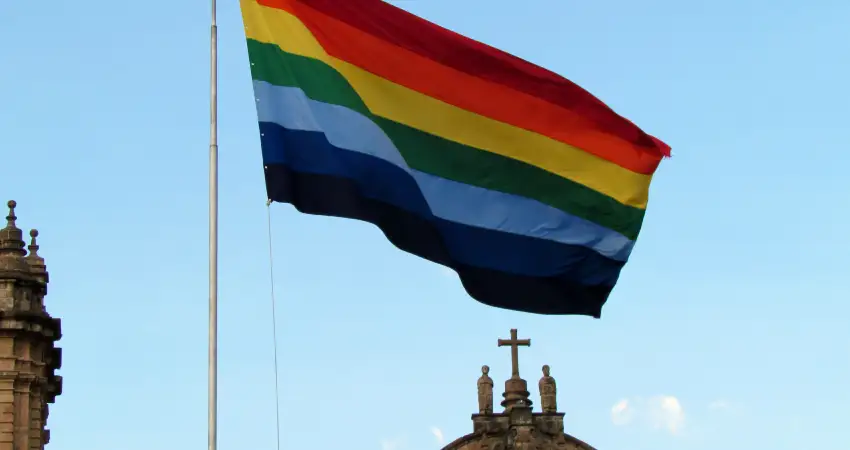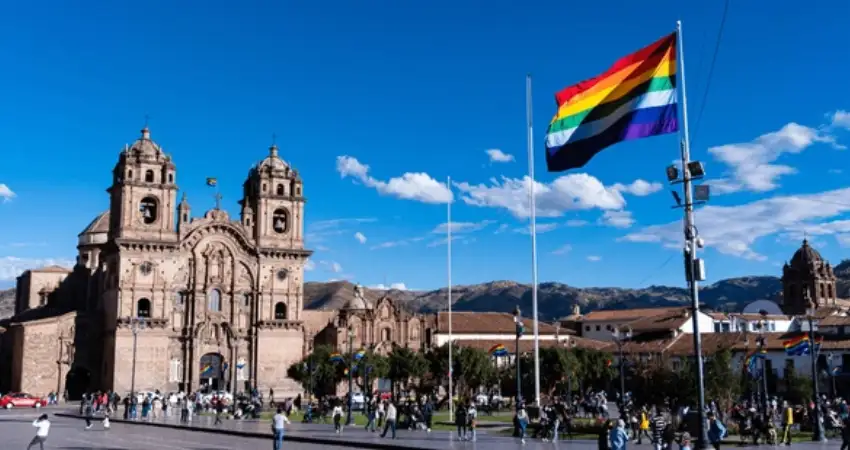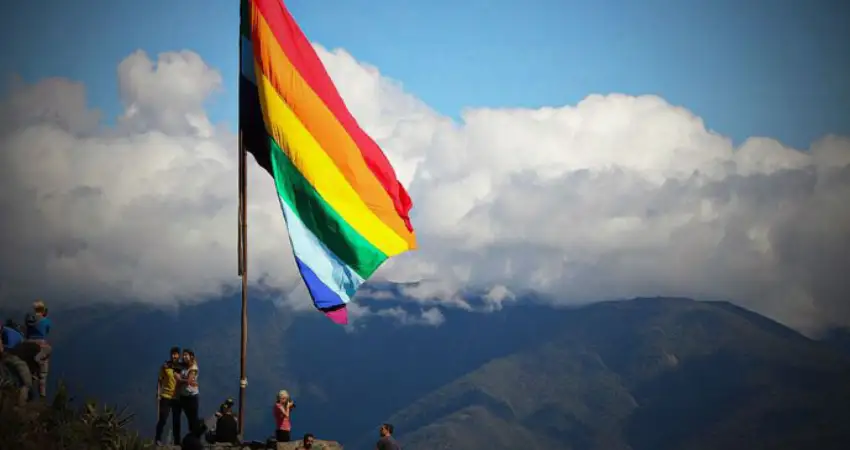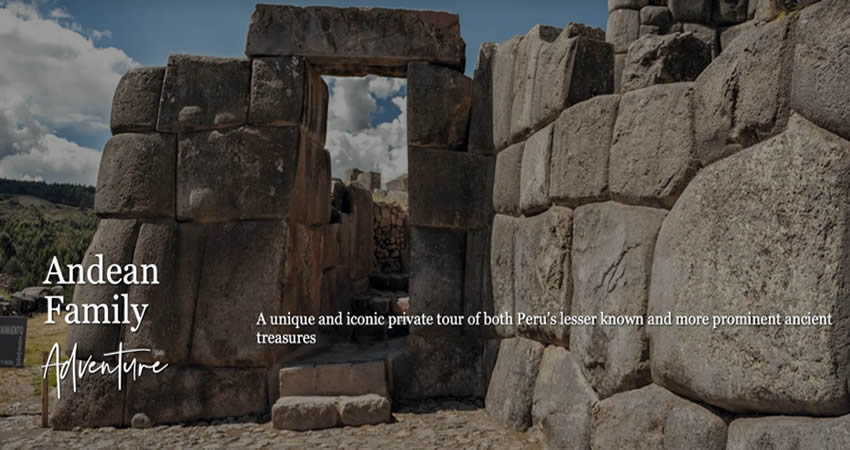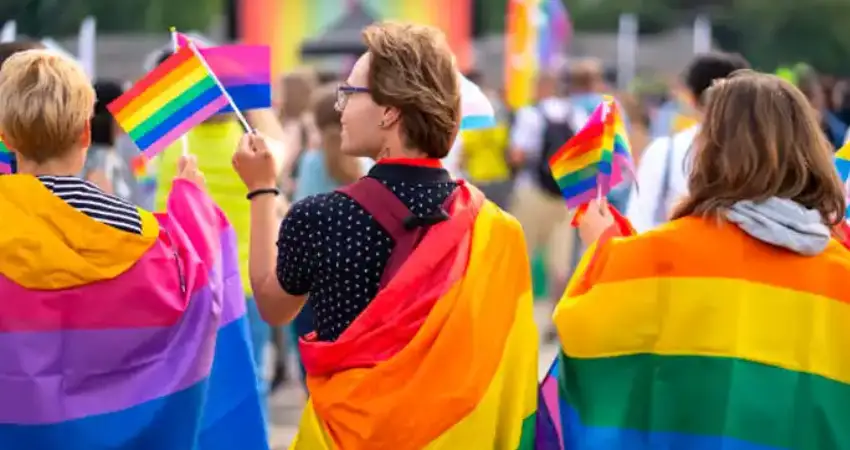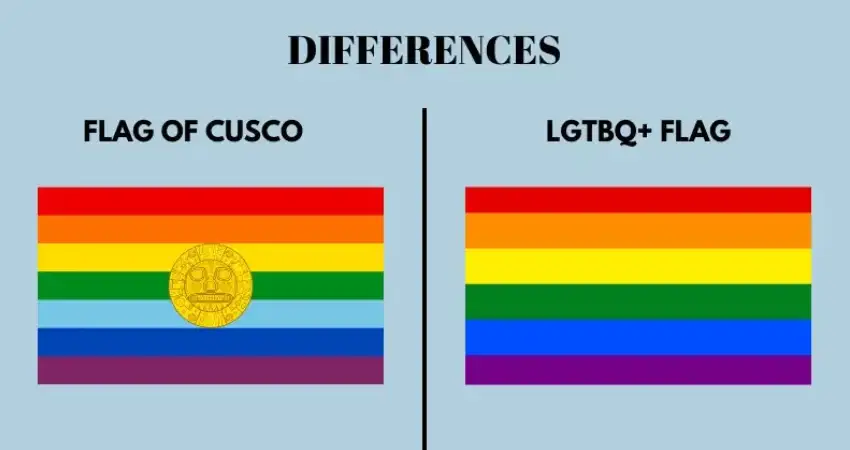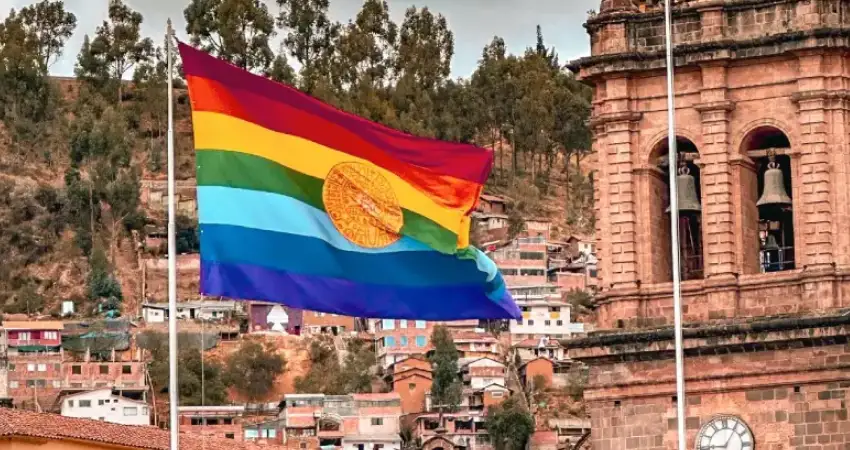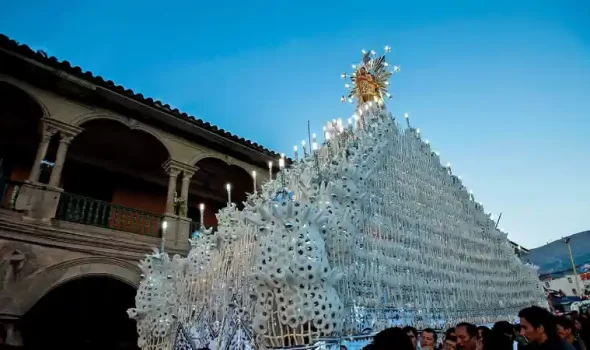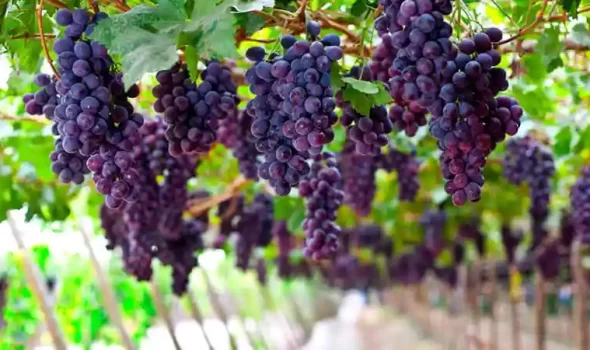1.- INTRODUCTION TO THE FLAG OF CUSCO
The city of Cusco that was once known as the center of the world for the Inca culture still keeps its essence alive and permanently shows all visitors how a fusion of history, culture and tradition are latent from the center to every corner of the city. The city has witnessed countless historical events that have marked its importance not only for Peru but for many countries in Latin America since during its expansion the Incas greatly influenced other cultures. Being the capital of the Inca culture their dominion extended throughout the territory known as the Tahuantinsuyo and even today it is possible to see how the dominion over the molding of the environment is reflected in incredible stone constructions popularly known as temples and plazas that thanks to a process of restoration can be maintained to this day.
| “Life is short, but the world is wide.” |
The Flag of Cusco that we know today is the innate symbol of pride for the inhabitants of the city since it is clearly distinguished by the peculiar and warm colors representing the rainbow, some people do not associate it also to the Incan Flag because this symbol represents a connection with mother earth and at the same time to the ethnic diversity that exists throughout the vast territory. These colors not only signify diversity of natural or geographical richness but are also part of the Andean belief that reflects the rainbow as a message of harmony and at the same time of balance between man and nature. Although the Flag of Cusco Peru has no direct relation to the Incan Flag, it has been recognized as an emblem of resistance and cultural pride giving a permanent reminder that the Incan culture is still alive and that the Cusqueños who currently reside in the city maintain the traditions and cultural heritage.
2.- REPRESENTATIONS OF CUSCO’S IDENTITY
Cusco is considered one of the most culturally diverse cities in the country and apart from the Flag of Cusco Peru you can also feel this Cusco identity due to the presence of customs, languages, traditions and aspects that highlight the syncretism that exists in the city thanks to the Spanish legacy and the Andean identity, these are also represented in festivities where you can see countless folkloric dances, traditional costumes, Andean cuisine, ceremonies and even representations of ancient Andean rituals.
3.- HISTORY OF THE FLAG OF CUSCO
The Flag of Cusco is not as old as many believe, in fact some people associate and identify it as the Incan Flag however this is somewhat erroneous since the Flag of Cusco was first used in the year 1973 in which Raul Montesinos made a flag with the colors of the rainbow to honor the 25th anniversary of the radio Tahuantinsuyo, after five years was the mayor Gilberto Muñiz who decided to integrate and officially adopt the Flag of Cusco as part of the protocol ceremonies in the city because it became quite popular. It was in 2021 when it was decided to add a characteristic symbol of the city to avoid confusion with other similar flags, the symbol used was the sun of Echenique and since then until today the Flag of Cusco is one of the main protagonists of the ceremonies that take place in the main square of the city completely stealing all the limelight and being hoisted every June 24 along with the flag of Peru.
4.- Design and Symbolism of the Flag of Cusco
The reason why many people associate the Flag of Cusco Peru with the Incan Flag is because it represents a symbol of cultural and historical identity of the entire city that was once considered the capital of the Inca culture, the main feature that can be seen are seven horizontal stripes that is a direct connection with nature, the skies, the cultural heritage as well as representing the Andean roots that still exist, each color has a symbolic value:
4.1.- Red
This color within the Flag of Cusco symbolizes the blood shed by Andean people during the passage of time in the formation of history, essentially during the resistance that occurred during the Spanish invasion. Some people also associate this color with the strength, courage and vitality of the Cusco people to be able to adapt and face any event that occurs. It is also a clear symbol of the passion and pride of a place that has preserved its identity and traditions over time and generations.
4.2.- Orange
It reflects the harmony that exists between the towns, being this the representation of the collective work and therefore also of the mutual understanding between diverse groups that in some moment of the history have inhabited all this territory, from the Inca culture to the traditional towns that can be found at the present time. Another important aspect is that the color orange within the Flag of Cusco represents the care of the earth which is directly associated with a connection to the Pachamama, surely in the representation that may have existed in the Incan Flag this would be one of the main colors.
4.3.- Yellow
It is one of the main colors of the Flag of Cusco since it represents the sun god, the main source of life and energy that the Inca culture used for a long time. The context of this color is reflected in the wisdom, light and at the same time prosperity that has often been one of the main aspects of the development of the city, even today, the representation of the sun god continues to be a fundamental element of the Cusquenian identity.
4.4.- Green
As in many other places, this color is directly associated with nature, fertility and abundance. In fact, according to the Andean belief one of the essential aspects of the culture was the agricultural activity, thanks to the ecological diversity that exists, the production of crops was possible in all geographical points such as valleys, mountains, forests and even terraces. This color is also a symbol of harmony and connection between people and nature that is still preserved in local communities to this day.
4.5.- Blue
It is directly associated with the sky and the climate, both extremely important and vital elements for the agricultural activity in the Peruvian Andes, although many people have also related it to aspects such as tranquility, wisdom and spiritual connection, since within the Andean belief the cosmic forces that can guide in one way or another the destinies of people are present.
4.6.- Light blue
It is the color that represents the element of water, which is also considered as a source of life and the origin of everything, there are even those who have associated it with the immensity of the universe because thanks to the proper use of this element in both agricultural activity and urban development improved allowing culture to reach its maximum splendor.
4.7.- Purple
Popularly known as a color that represents transcendence, mystical wisdom and at the same time the ancestral, this color has been part of the history of Cusco since Inca times. Spiritual connotation, quite striking as it is mainly used for the performance of ceremonies and rituals that are still practiced today in the Andes, has also been considered as a symbol of resilience of all the people of Cusco even despite historical changes.
5.- STANDARDS AND PROTOCOLS
“Currently the Flag of Cusco is a vital part of all important ceremonies that take place in the city, in fact after the flag of Peru has a special protocol to raise it starting with the intonation of the hymn to Cusco while the Flag of Cusco rises to the top and fluttering in the breeze that spreads through the main square.”
6.- DIFFERENCE WITH THE LGBTIQ+ FLAG
For a long time a controversy has been created because the LGBTIQ+ community has implemented a flag that has the particularity of being quite similar to the Flag of Cusco, of course this contains differences which is good to know to avoid misunderstandings or awkward moments.
The Flag of Cusco has two elements that are easily perceived to identify it, first it contains seven colors that reflect not only the colors of the rainbow but are also linked to elements of nature and in the center you can see the golden sun also known as the sun of Echenique.
On the other hand, the LGBTIQ+ flag is characterized only by having six colors which are a symbol of identification for gay, lesbian, bisexual, transgender and other people. In fact each of the colors has had an interpretation that since 1998 has been adapted to the needs of the people who are part of this community, each time it is a larger movement that seeks equal rights.
- Red: Life
- Orange: Attraction for the same gender
- Yellow: Light
- Green: Nature
- Blue: Magic
- Purple: Art
7.- FAQs ABOUT THE FLAG OF CUSCO
- What is the history of the Flag of Cusco?
The Flag of Cusco is not the Incan Flag, it was created especially to celebrate the 25th anniversary of the Tahuantinsuyo radio in 1973, since then it has been officially adopted as the symbol of identification of the city and cultural pride.
- What do the colors of the Flag of Cusco represent?
The colors shown in the Flag of Cusco represent the connection that exists between the people who live in the city and the traditional legacy inherited by ancient cultures, besides that is a representation of the rainbow that according to Andean cosmogony is a deity of nature.
- When was the Flag of Cusco officially adopted?
In 1978, the mayor of Cusco, Gilberto Muñiz officially adopted the Flag of Cusco as a symbol of representation of the city.
- How is the Flag of Cusco different from the LGBT flag?
Essentially, the Flag of Cusco has 7 colors and the image of the sun of Echenique in the center, while the LGBTIQ+ flag has only 6 colors and no image inside.
- What cultural significance does the Flag of Cusco hold?
Cusco is also known as the Rome of America for the historical legacy it possesses, for this reason the Flag of Cusco is also considered as a symbol of cultural pride as well as an aspect of identity of which all cusquenians feel proud.
During the month of June every year the main festivities of the city of Cusco are celebrated, for this reason all the houses choose to raise a flag at the highest point as a symbol of identity and celebration, this is a sight that you will really love during your next trip. Auri Peru seeks to create cultural immersion experiences in which travelers can experience something different. If you would like to be part of this contact us now, we are always at your disposal.
“Travel more, regret less.”




